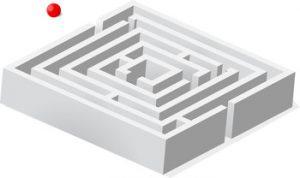Blogrige
The Official Baldrige Blog

How can you develop as an innovative leader?
A recent Harvard Business Review article by Katherine Graham-Leviss looked at “The 5 Skills that Innovative Leaders Have in Common,” and the author provides behavioral suggestions for those skills.
But how do you make the suggestions work for you and your unique leadership situation? The answer may be found in the Baldrige Excellence Framework, which, as a holistic framework, can guide you to customize how you adapt and develop innovative competencies for your organization.
According to analysis by XBInsight, which surveyed 5,000 leaders across a wide range of industries, every CEO should be cultivating the following behaviors:
- Manage Risk: Leaders should benchmark best practices, set time limits for analyzing situations, and plan for risks as part of strategic alternatives.
- Demonstrate Curiosity: Leaders should create a learning environment or community to encourage the free flow of new knowledge and perspectives, study patterns of behavior, and make time for developmental activities.
- Lead Courageously: Leaders should identify and confront risks, share feelings and opinions with clarity and conviction, and learn to recognize and appreciate leadership qualities in others.
- Seize Opportunities: Leaders should learn to see advantages in changing situations and new developments, consider past opportunities, and encourage collaboration with employees.
- Maintain a Strategic Business Perspective: Leaders should create and/or participate in a cross-functional committee, perform a knowledge-based SWOT analysis, involve people throughout the organization in the strategic planning process, and develop multi-year strategy to grow the business.
How do you know on which risk or best practice or learning environment or developmental activity, etc., to focus based on your leadership needs and the needs of your organization? That’s where the Baldrige Excellence Framework comes in.
To borrow a line from Baldrige community member Ron Schulingkamp, in the blog “Baldrige and ISO QMS: A Complementary Relationship,” “The Baldrige framework provides a holistic, systems-based business model that builds alignment across the organization by making connections between and reinforcing organizational systems, processes, strategy, and results. . . . The Baldrige framework is like the blueprint of a building.” It helps you determine where the specific systems within the building should go or be adjusted--and for the purposes of leadership development, which behaviors to develop and how.
A leader can use the Baldrige framework--and especially category 1 of its Criteria--to determine the behaviors that work for the organization—based on a holistic, systems-based business model. For example, within the Criteria, item 1.1 probes intelligent risk; items 4.2 and 5.2 probe organizational learning and workforce and leader development; item 4.1 probes continuous improvement and innovation aligned with suppliers, partners, and collaborators; item 2.1 probes strategy considerations; and item 2.2 probes resource allocation, workforce plans, and performance measures and projections.
The Baldrige framework can serve as a blueprint for a leader to probe personal and organizational needs and adjust and adapt innovative competencies to build that leadership for those needs.
How do you focus your leadership development, with an eye toward cultivating behaviors that support innovation and your organization's needs?
About the author
Related Posts
Comments
- Reply





